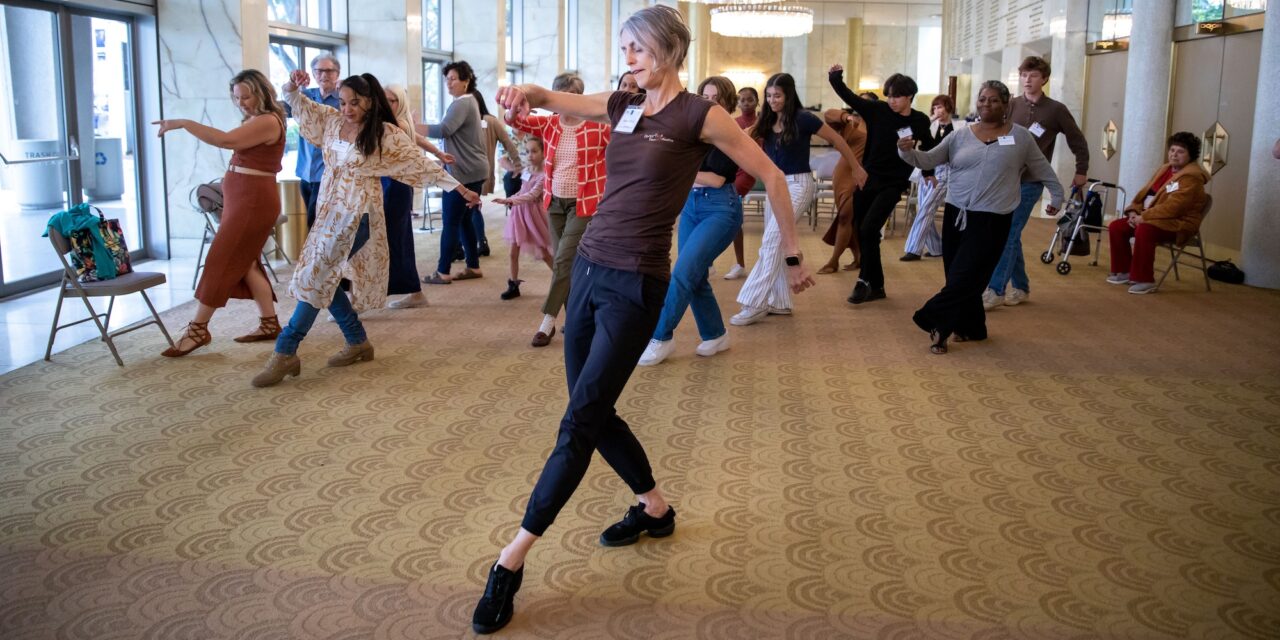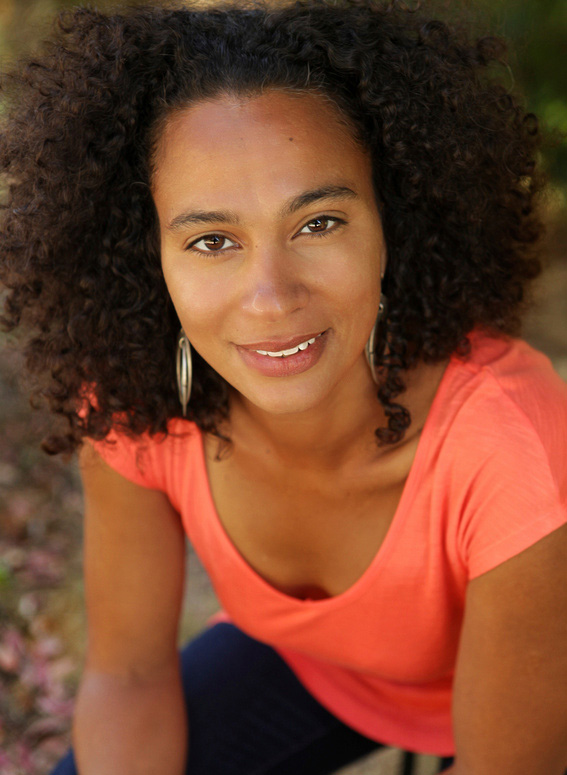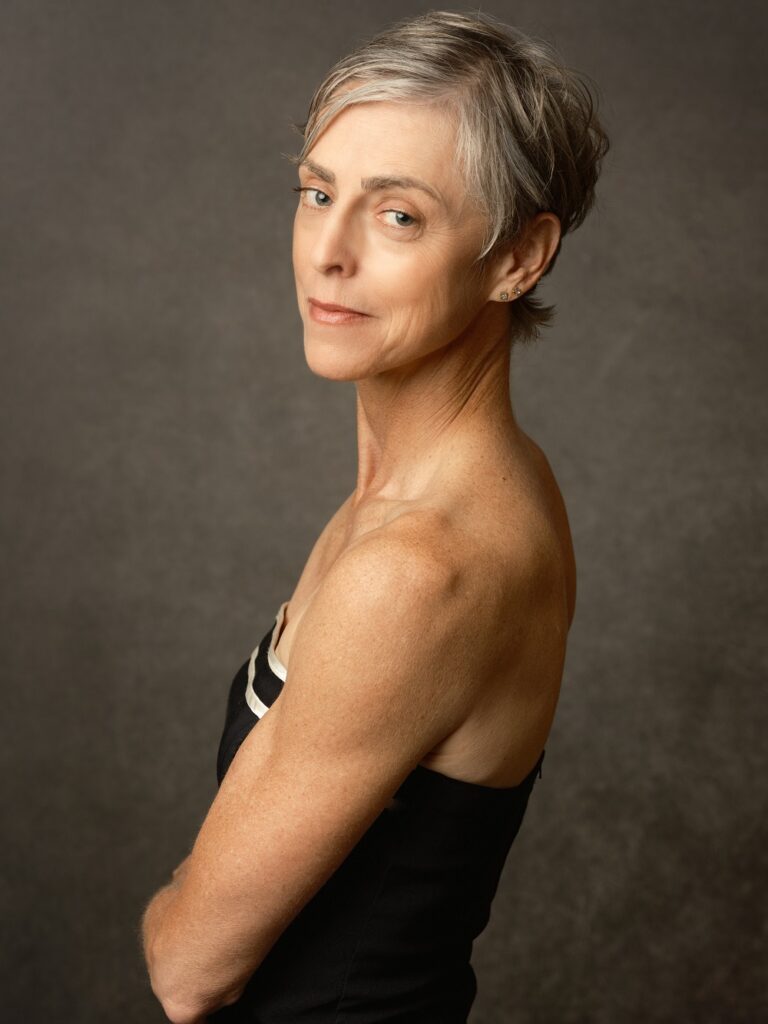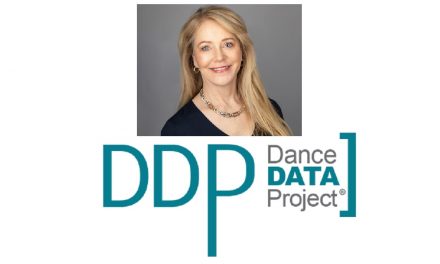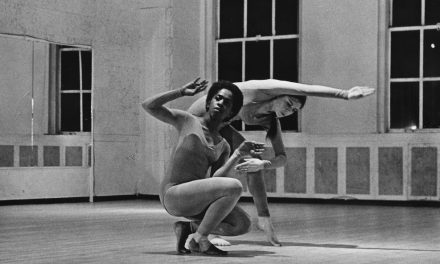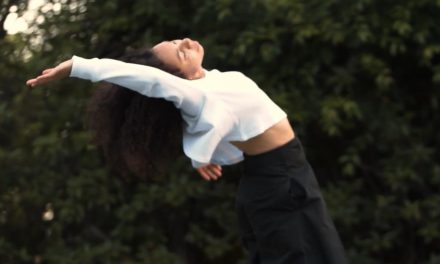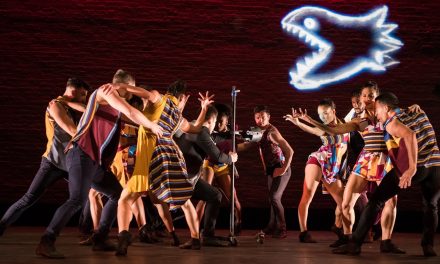Dancing Through Parkinson’s, the community offshoot of Invertigo Dance Theatre, will hold a Wellness Weekend on May 17th and 18th in coordination with the Mental Health Expo and as a part of the National Mental Health Awareness Month. It is hosted by Crenshaw Yoga and Dance. The weekend includes movement classes, brain health lectures, and storytelling workshops all centered around the power and creativity of the LA Parkinson’s community. Friday is organized as an open house with introductory classes and a guest speaker. Saturday showcases a full day of classes, workshops, speakers, and food trucks, culminating in a film screening.
I recently had the immense pleasure of speaking with Invertigo Dance Theatre’s incoming Executive Director Cat Moses, and Rachel Whiting, a lead teaching artist and creative advisor for Dancing Through Parkinson’s. We discussed Invertigo Dance Theatre’s ongoing mission to promote physical health, mental health, and joyful community interaction in the greater Los Angeles community and the specifics of the weekend’s event. We explored not only the upcoming expo, but Invertigo’s ongoing support of community-based dance, the science behind the work, and their plans moving forward.
Mental Health Awareness Month, was first recognized in 1949. Since then, it has been essential in raising awareness for millions who deal with these struggles, often without support. During May. numerous events will draw attention to organizations, individuals, and movements that work to educate and bolster the mental health of both communities and individuals. Mental and physical health are inextricably linked and this weekend addresses both.
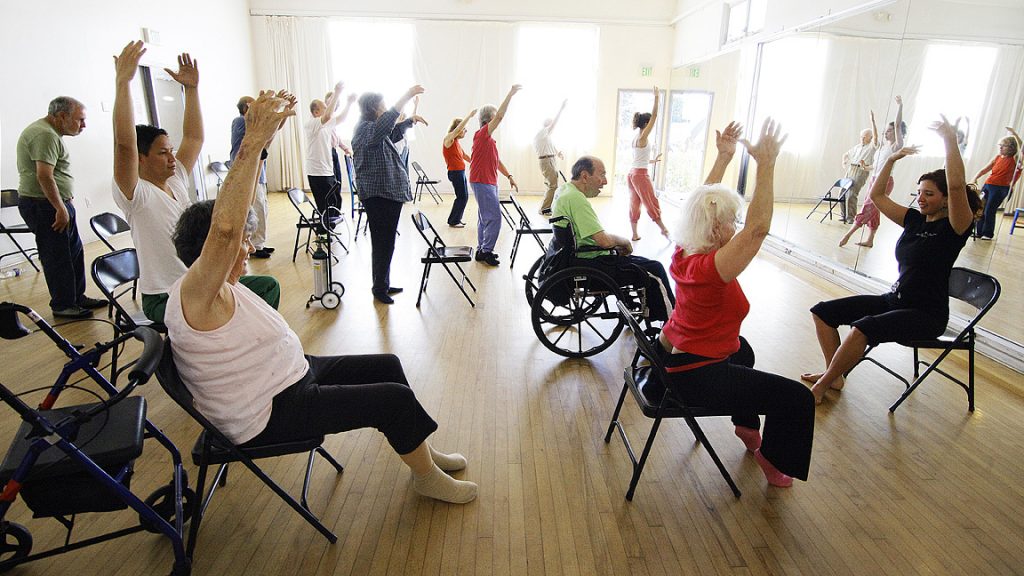
Invertigo Dance Theatre – Dancing Through Parkinson’s – Laura Karlin leading class – Photo courtesy of the company.
Over the last several years, the dance community has finally started to address the mental health needs of its members. Organizations such as Minding the Gap, Danscend, IADMS, and The National Dance Education Organization, among numerous other advocacy groups, have been working within dance schools, universities, companies, and the competition circuit to advocate for the mental health of dancers. This is essential work and the effects are already starting to ripple through the industry. The work of dance therapy and community dance turns that model upside down. Instead of addressing the harms created within the dance community, it focuses on the positive effects of dance on minds and bodies. It takes movement practices out of the studio and into the world to elevate the physical and emotional well-being of its practitioners. Through dance therapy and community dance practices, movement is incorporated into all kinds of people’s lives; in clinical, educational, and community settings. One of the most successful applications of community dance practice is its application to Parkinson’s Disease.
Parkinson’s Disease (PD) is a chronic neurologic condition named after Dr. James Parkinson, who first described the syndrome in 1817. PD is a progressive disease, which causes a gradual loss of the nerve cells in the brain that produce the neurotransmitter dopamine. (Parkinson’s Foundation) The main motor manifestations of Parkinson’s are resting tremor, generalized slowness (bradykinesia), and stiffness of the limbs (cogwheel rigidity). Because Parkinson’s presents differently for each person, other manifestations may include small handwriting, decreased facial expression, soft speech, and difficulty swallowing. As the disease progresses, postural instability develops, resulting in a slow, imbalanced shuffling gait, which can result in falls. Other symptoms can also develop, including lightheadedness, constipation, dementia, depression, and sleep disturbance. Parkinson’s is not a fatal disease but can be a contributing factor to death. (Cleveland Clinic)
So, how does dance help? Ms. Whiting explains the science behind Dancing Through Parkinson’s mission;
Dance is not only an aesthetic experience, but a form of learning. With the addition of music, rhythm, imagery, and storytelling, DTP is building on fundamental neuroscience and evidence-based research that says dance integrates multiple facets of brain activity, recruiting motor centers and integrating these activities to make new connections in the body and brain that have become disrupted due to a movement disorder, age or injury.
Even a brief 15-minute dance session can decrease stress and anxiety. This is because dancing prompts the brain to release “feel-good” hormones such as endorphins, serotonin, and dopamine. Experiencing different movement scenarios promotes adaptability and fresh perspectives. Moreover, dance enhances the brain’s circuits related to movement and orientation, providing an understanding of our surroundings that aids in the navigation of physical spaces.
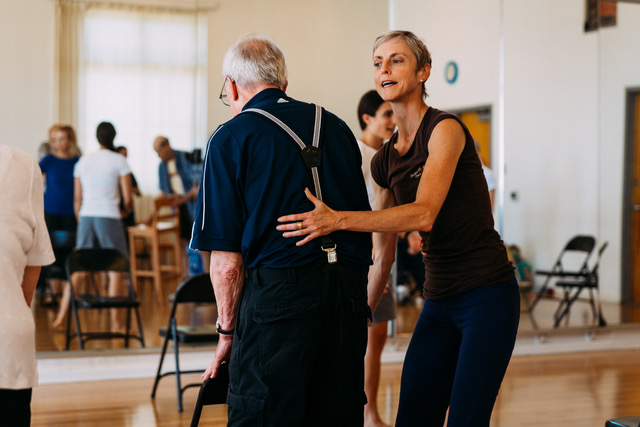
Invertigo Dance Theatre – Dancing Through Parkinson’s – Rachel Whiting on right – Photo by Ginger Sole Photography.
Dancing Through Parkinson’s moves away from the medical model of disability, focusing instead on moving, creativity, artistic interpretation, social interaction, and the expression of beauty. At the same time, we view dance as a lifestyle intervention as a brain health-focused mode of movement. DTP effectively challenges stereotypes surrounding dance as gendered or reserved solely for the young or those with specific abilities.
Dance as a therapy for Parkinson’s Disease is well-established worldwide. This particular company is unique because of its association with Invertigo Dance Theatre. Ms Whiting spoke of the evolution of the company since she joined.
Dancing through Parkinson’s has this life force that is going through it. Before the pandemic, we had 10 different in-person classes. We then transitioned to the Zoom platform during COVID. We’ve made four screen dance films. The latest got an honorable mention at the 2023 World Parkinson’s Congress. We have partnered with Invertigo’s Professional Company on stage. Dancing Through Parkinson’s has also had their own theatre performances. So, the magic that happens in the classroom is starting to go out into the greater community. It’s giving our dancers a chance to tell their stories and be witnessed. For many who come to dance through the lens of diagnosis, they start with “I’m just here to feel good and build community.” We counter with, “Yes, but you have a story to tell so why don’t we enhance that and then invite a few people to witness.” So through our screen dance and our theater performances, we’ve started to build an active community, one that seems to be chomping on the bit to tell their story. It’s not always a story of Parkinson’s. It’s a story of humanity.
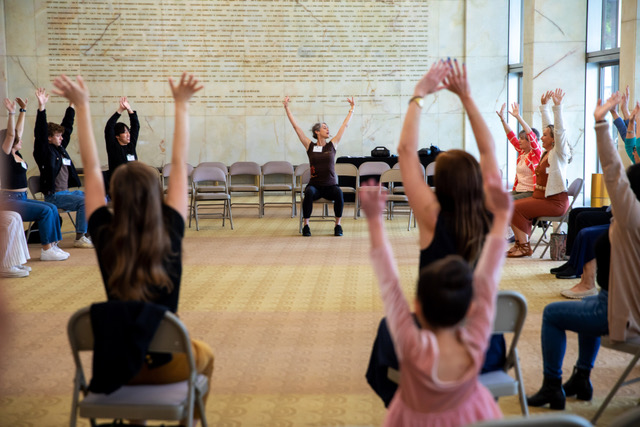
Invertigo Dance Theatre – Rachel Whiting leading Dancing Through Parkinson’s class – Photo by Samuel Cruz.
How do Dancing Through Parkinson’s and the theatrical and screen dance experiences serve to de-emphasize the disease and focus on the totality of each individual? Ms. Moses explains:
We really move away from the medical model of what disease is, where it’s something that’s supposed to be fixed to focus on what society needs to embrace people who have a different story.
She gives a lovely example:
For one of our screen dance films, a former participant used the film itself to announce to his family that he actually had Parkinson’s. It was this sort of insular, private, intimate family connection. And we made this beautiful film. He was so moved by it. He’s like, Okay, this is my announcement to my family community. I have Parkinson’s, but look at what I’m doing with it.
Dancing Through Parkinson’s is integrated into the Los Angeles community, and is also part of a worldwide movement. It engages communities where they are and accepts challenges as a part of life to be celebrated rather than erased. Ms. Moses and Ms. Whiting shared their goals for the local community, the various ways that it is part of the larger network, and examples of how the reach of DTP is expanding.
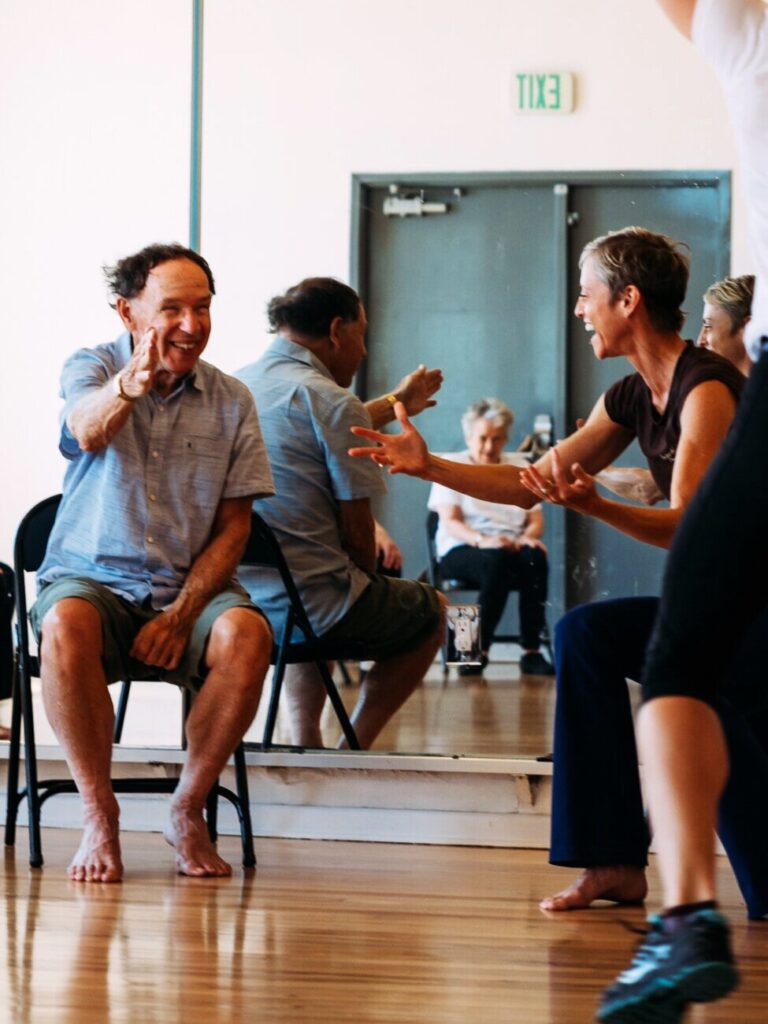
Invertigo Dance Theatre – Rachel Whiting (right) – Dancing Through Parkinson’s – Photo by Ginger Sole Photography.
Ms. Whiting:
[Going forward] We are partnering with Ryan Glatt of the Pacific Neuroscience Institute to further develop Brain Health-focused dance, clarifying the impact of DTP as an evidence-based dance class offering. As a lifestyle intervention, Dancing Through Parkinson’s is effectively challenging stereotypes surrounding dance as gendered or reserved solely for the young or those with specific abilities. We are also offering an interchange of narrative-based workshops offered by Dr. Robert Cochrane of the “Yes and Exercise” foundation to infuse DTP with storytelling tools to build social bonds, self-confidence, and an openness to multiple pathways for creative engagement. Lastly, we are funneling these partnerships into the launch of The Voices of Parkinson’s Storytelling Initiative to center the experiences and stories of Dancing Through Parkinson’s (DTP) in a live theater performance. The creation process of these performances will be a collaborative experience with participants, care partners, and DTP Teaching Artists. The performances will explore personal histories, experiences, struggles, triumphs, hopes for the present, and the imagination of wild and wonderful futures for the DTP community.
Ms. Moses:
We are supported by the Parkinson’s Foundation. We expect that the relationship will develop more, especially from this work with Ryan Glatt. We see it as something that will become sort of embedded in Los Angeles. Half a million people in California have Parkinson’s and that number will continue to increase. This is a national issue, it’s just the aging population. I think this program is so amazing, because it is this neutral space. It’s about expression, it’s about storytelling, it’s about dance. And that part, I think, makes it so accessible.
They are also working on a partnership with the YMCA and starting to look at racial breakdowns for Parkinson’s in order to personalize outreach to each individual community. For example, Ms. Whiting talks of looking at their language:
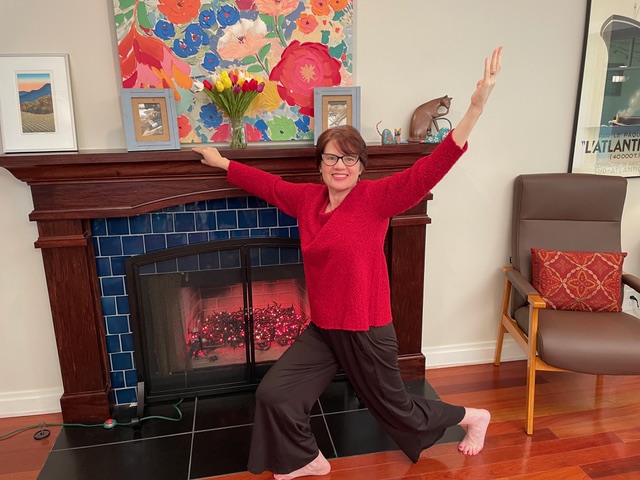
Invertigo Dance Theatre – Dancing Through Parkinson’s – Featured dancer: Melanie – Photo by Lutz Productions.
Even the word dancing can be a scary word for some people. So we’ve even played around with the languaging. Of being more direct; a brain and balanced movement for the body, something that’s like, “Oh, I can do that!” Secretly you’re dancing, but we don’t have to name it. Like Cat (Ms. Moses) said, we need to be mindful of the communities that we’re stepping into, to create an inclusive environment that is not stigmatizing.
The work being done is incredibly inspiring and is ongoing. The wellness weekend is a great introduction to it. I want to leave you with a bit more about these individuals and what their personal goals are for Invertigo and Dancing Through Parkinson’s. They are powerful creative artists with so much in store for Los Angeles and beyond.
Ms. Whiting is busy with a new(ish) MFA focused on dancing with disabilities motivated by her work in the community-engaged dance of Parkinson’s and special needs youth. She recently presented at NDEO’s Virtual Summit on Dancing with Disabilities, performed with Andrew Pearson and his company Bodies In Play for his MFA thesis project, and continues to create additional opportunities for inclusive dance throughout Los Angeles.
To RSVP for the Wellness Weekend, click here. All tickets are free or pay what you can. You can also simply donate to support the ongoing work of Invertigo Dance Theatre and Dancing Through Parkinson’s.
To learn more about Invertigo Dance Theatre, please visit their website.
Written by Nancy Dobbs Owen for LA Dance Chronicle.
Featured image: Invertigo Dance Theatre – Dancing Through Parkinson’s – Rachel Whiting leading class – Photo by Ginger Sole Photography.

